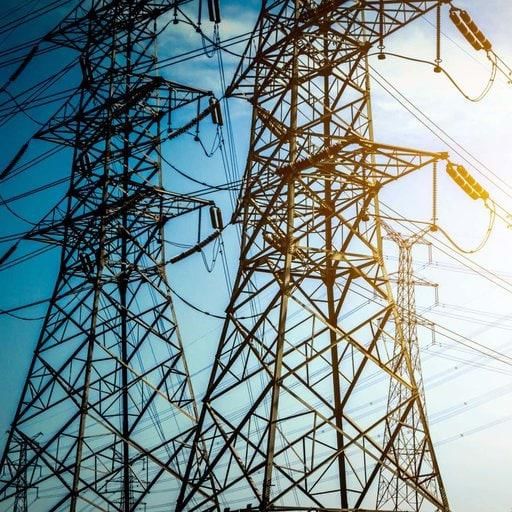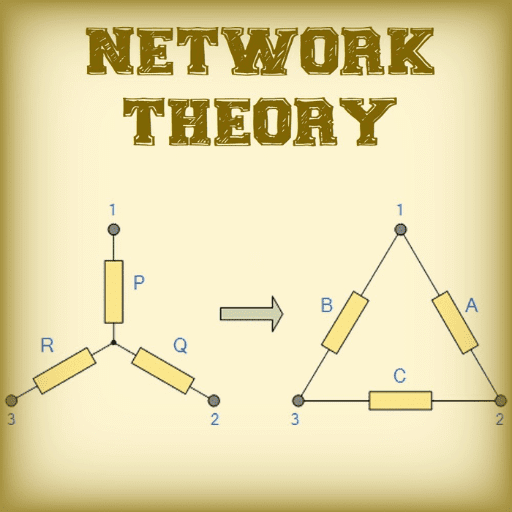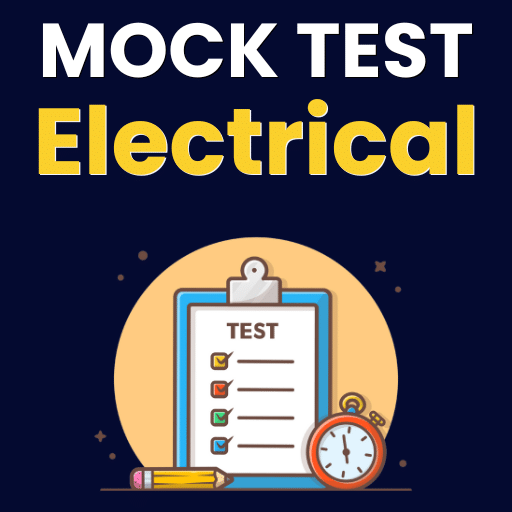Best Study Material for Electrical Engineering (EE) Exam
Electrical Engineering (EE) Exam > Electrical Engineering (EE) Notes > Power Systems > Modern Power Systems
Modern Power Systems | Power Systems - Electrical Engineering (EE) PDF Download
| Table of contents |

|
| Evolution: |

|
| Structure |

|
| Power Grids |

|
| The National Grid: |

|
Evolution:
- Electrical Technology was founded on the remarkable discovery by Faraday that a changing magnetic flux creates an electric field. Out of that discovery, grew the largest and most complex engineering achievement of man: the electric power system. Indeed, life without electricity is now unimaginable. Electric power systems form the basic infrastructure of a country. Even as we read this, electrical energy is being produced at rates in excess of hundreds of giga-watts (1 GW = 1,000,000,000 W). Giant rotors spinning at speeds up to 3000 rotations per minute bring us the energy stored in the potential energy of water, or in fossil fuels. Yet we notice electricity only when the lights go out!
- While the basic features of the electrical power system have remained practically unchanged in the past century, there are some significant milestones in the evolution of electrical power systems:
- First complete DC power system built by Edison (1882): Incandescent lamps supplied by steam driven DC generators (electrical cable system at 110V). 59 customers spread over an approximate area with 1.5 km radius.
Question for Modern Power Systems
Try yourself:
What was the first complete DC power system built by Edison in 1882?View Solution
- Development of transformers led to supersession of DC systems by AC systems (why?).
- Nikola Tesla - polyphase induction motors: led to development of AC 3 phase systems. Interconnection of systems led to standardization of frequency (why?), 60 Hz in North America and 50 Hz in most other countries. Use of higher and higher voltage levels (up to 1000 kV line-line rms AC). Standardization of voltage levels.
- Development of Mercury Arc Valves, and subsequently thyristors led to high voltage dc transmission (HVDC): DC transmission suited for very long distance bulk transmission and underwater cable links. First commercial DC link in 1954.
- Several new developments: Gas turbines, static excitation systems, fast acting circuit breakers, microprocessor based relaying, use of communication technologies etc.
- Need for better utilisation and operation of AC transmission systems by use of high power electronic converters suggested. Several such converters are now in operation.
Structure

- Present day power systems are characterised by:
- AC generation (3 phase synchronous machines using hydro, fossil and nuclear as primary energy sources)
- AC transmission (a limited number of DC transmission links are present in some systems)
- 3 phase AC utilization (some loads are single phase, but they are usually distributed equally in all phases to obtain a balanced system)
- The transmission network consists of an extra high voltage (220 kV and above) lines interconnecting large generators to major load centers. These lines are capable of transmitting large amounts of power over large distances (1000 km is not unusual!). For example, several 400 kV lines may be required to transmit, say, 2000 MW from a large thermal power plant to a distant load center.
- Note: high voltage dc lines are suitable if distances are very large (we shall see why later in the course).
- Generators, typically having terminal voltages of around 15 kV and are connected to these EHV lines via transformers. Interconnecting transformers connect EHV lines at different voltage levels (they are usually auto-transformers - why?).

- A sub-transmission network, consisting of transmission lines at 66 kV and 132 kV are used to deliver power received from EHV network to various distribution substations.
- Finally, a distribution network consisting of lines at less than 66 kV are used to transfer power to each consumer.
- A large power system may also be connected to neighbouring power systems via AC transmission lines or DC links.
- The power exchange between such neighbours is usually regulated (you will learn how this is done later).
Question for Modern Power Systems
Try yourself:
What led to the development of AC 3 phase systems?View Solution
 |
Test: Transmission Line Parameters
|
Start Test |
Start Test
Power Grids
- Except for a few islands and some small isolated systems, the entire electric grid in North America is really one big circuit. The humble wall outlet is actually a gateway to one of the largest and most complex objects ever built. The grid encompasses billions of individual components, tens of millions of miles of wire and thousands of individual generators - Thomas Overbye, Reengineering the Electric Grid, American Scientist, 2000, Vol. 88, Iss. 3.
- The Indian Power Grid is not quite as big as North American power systems, but still has a large generating capacity of about 100 GW (100,000 MW). It is actually made up of three synchronised grids:
- Northern Regional Grid
- Southern Regional Grid
- Western Eastern North-eastern Regional (WR-ER-NER) Grid
- A synchronised grid implies that the generators in that grid are connected to one another by at least one AC transmission path. This also means that the synchronous generators in that grid are all operating at the same electrical frequency (what happens if they do not?).
- For a well designed and operated system, inter-connected synchronous generators are seen to "stick together" in synchronism (by virtue of the physical equations which govern their motion). However, they may lose synchronism if subjected to large disturbances. A generator when connected to a power system has to be connected by a special procedure known as 'synchronisation'. You will learn some of these things in forthcoming lectures.
- A load can be connected in a synchronous grid by simply connecting it in shunt (after suitable voltage transformation using transformation and ensuring that the system is capable of servicing that extra load).
- Did you know? In the WR-ER-NER grid, a synchronous machine in Panandhro Thermal Power Station (Kutch, Gujarat) operates "in synchronism" with Ranganadi, a hydro-generator in Arunachal Pradesh, a distance of more than 2000 km!
- There may be a very small number of induction generators in a synchronous grid. Induction generators do not run at synchronous speed and are sometimes used in conjunction with wind turbines. However, since induction generators always absorb reactive power, they are limited to small applications wherein reactive power is supplied externally by capacitors and synchronous generators.
- The three synchronous grids in India have the same nominal frequency (50Hz) but may not operate exactly at the same frequency. They are operated independently. However, the synchronous grids are connected by DC links which allow for a limited and controlled power exchange. It is planned to make a national grid consisting of large capacity links between all grids in the future (why is there such a high degree of interconnection?).
The National Grid:
The National Grid in India is a high-voltage electricity transmission network that links power stations and major substations across the country, ensuring that electricity generated in one region can meet demand in another. This grid is owned and maintained by the state-owned Power Grid Corporation of India and operated by the state-owned Power System Operation Corporation. With an installed power generation capacity of 417.68 GW as of May 31, 2023, it ranks among the largest operational synchronous grids globally.
 Indian Grid
Indian Grid
- India's power grid works as a large connected grid system with a standard frequency of 50 Hz, staying between 49.5-50.5 Hz since September 17, 2012.
- The Central Government manages the grid frequency by charging more to states that use electricity at lower frequencies.
- Besides, there are direct connections with Bhutan and indirect links with Bangladesh, Myanmar, and Nepal.
- There's a plan for an undersea link to Sri Lanka (the India–Sri Lanka HVDC Interconnection) and another link between Myanmar and Thailand. This connection would help in forming a power group and supporting trade among all BIMSTEC nations.
The document Modern Power Systems | Power Systems - Electrical Engineering (EE) is a part of the Electrical Engineering (EE) Course Power Systems.
All you need of Electrical Engineering (EE) at this link: Electrical Engineering (EE)
|
21 videos|69 docs|45 tests
|
FAQs on Modern Power Systems - Power Systems - Electrical Engineering (EE)
| 1. What is evolution in the context of power grids? |  |
| 2. How are power grids structured? |  |
Power grids are structured as a network of interconnected transmission and distribution lines, substations, transformers, and power generation sources. The structure typically includes three main components: generation, transmission, and distribution. Generation plants produce electricity, which is then transmitted at high voltages through transmission lines to substations. Substations step down the voltage and distribute the electricity through distribution lines to homes, businesses, and other consumers.
| 3. What are modern power systems? |  |
Modern power systems refer to the advanced electrical power systems that incorporate the latest technologies, automation, and control strategies for efficient and reliable electricity generation, transmission, and distribution. These systems often integrate renewable energy sources, incorporate smart grid technologies, and focus on optimizing energy management and minimizing environmental impacts.
| 4. What is the role of electrical engineering in modern power systems? |  |
Electrical engineering plays a crucial role in modern power systems as it involves the design, analysis, and implementation of electrical infrastructure, equipment, and control systems. Electrical engineers are responsible for optimizing the performance and efficiency of power generation plants, developing transmission and distribution networks, ensuring system stability, and integrating renewable energy sources. They also work on improving grid resilience, implementing smart grid technologies, and addressing power quality issues.
| 5. What are some challenges faced by modern power systems? |  |
Modern power systems face several challenges, including the integration of intermittent renewable energy sources like solar and wind power, ensuring grid stability and reliability, addressing cybersecurity threats, and managing the increasing demand for electricity. Other challenges include aging infrastructure, the need for grid modernization, and the transition towards a more decentralized and flexible power system. Additionally, the transition to cleaner energy sources and reducing greenhouse gas emissions is also a significant challenge for modern power systems.
Related Searches


























